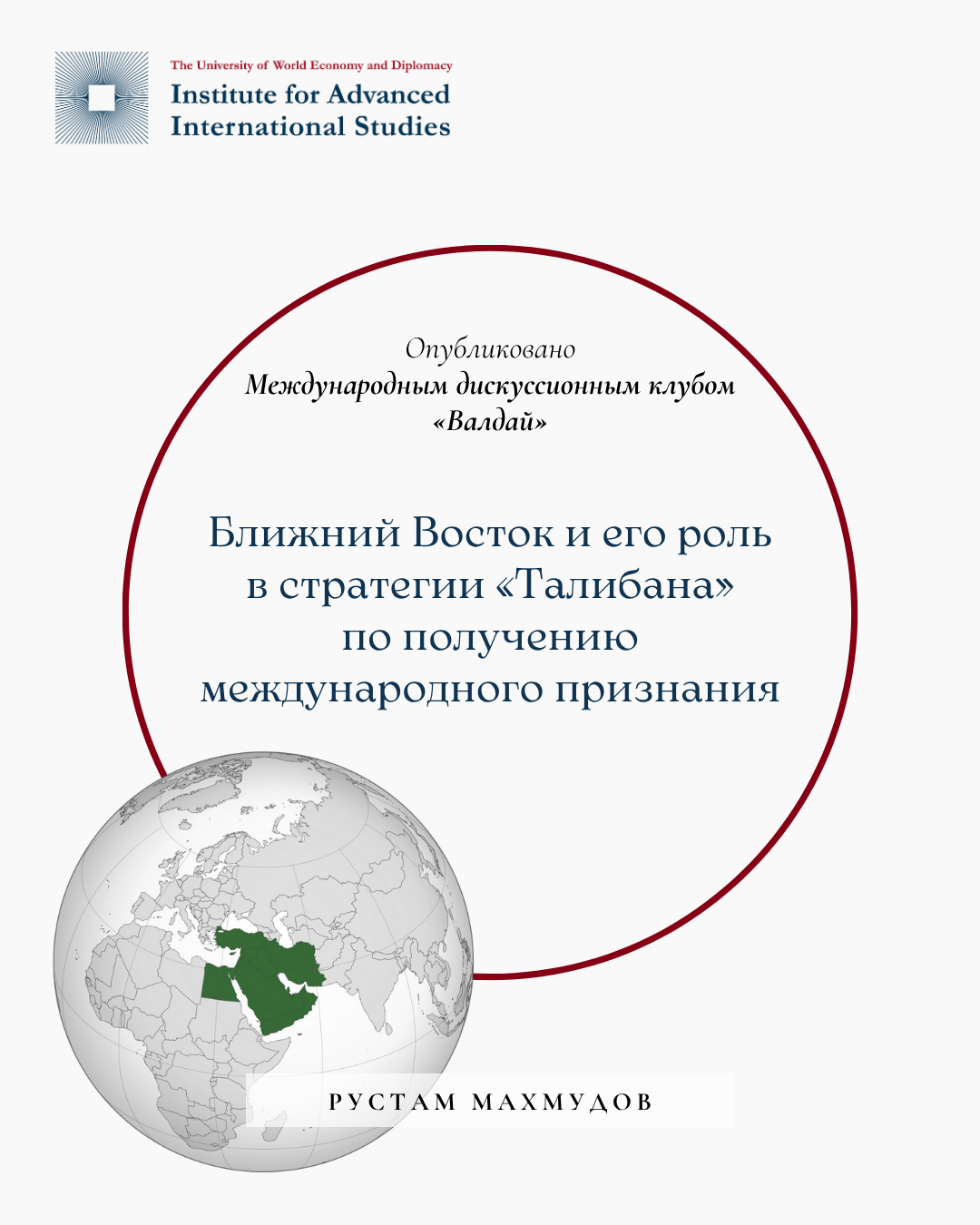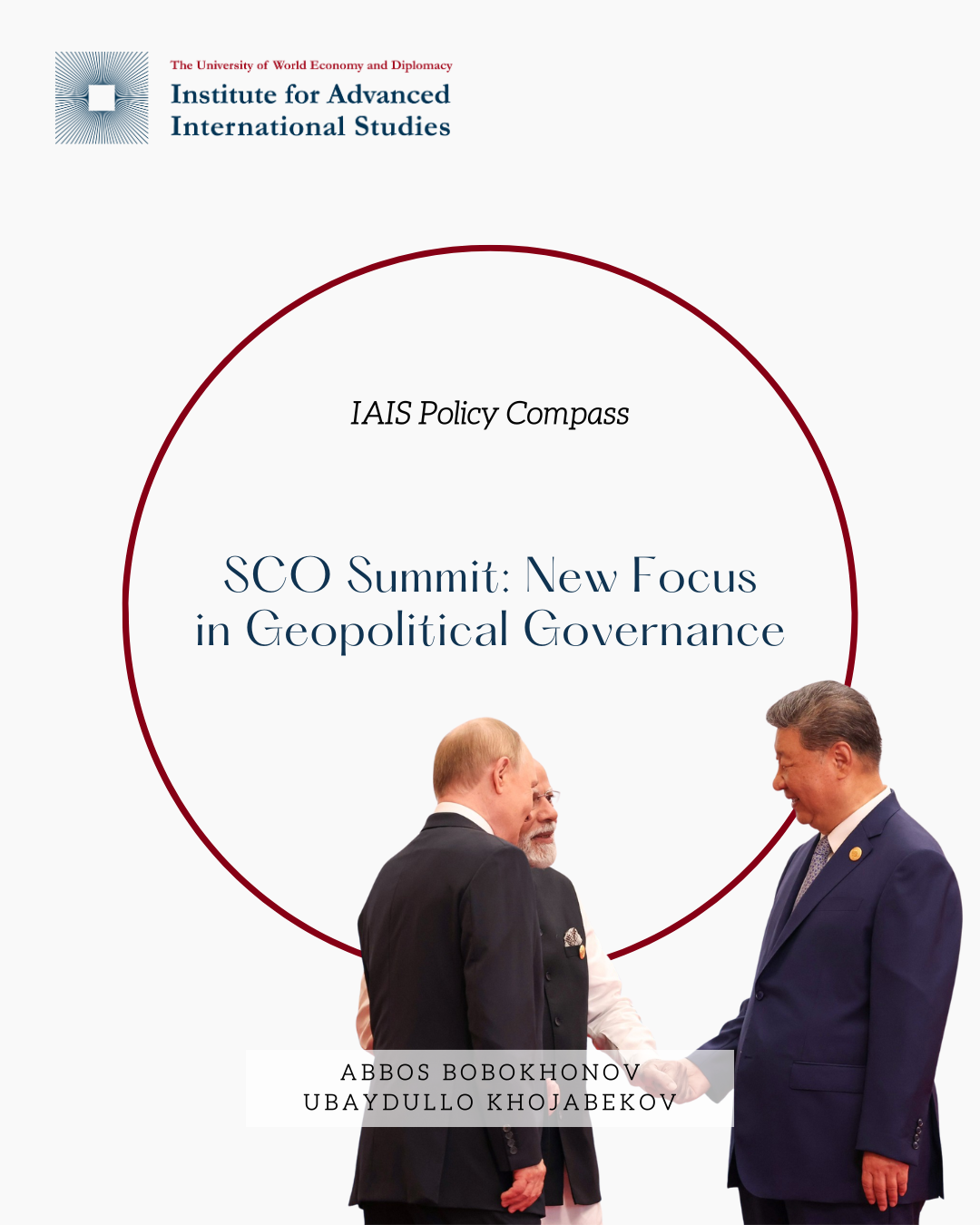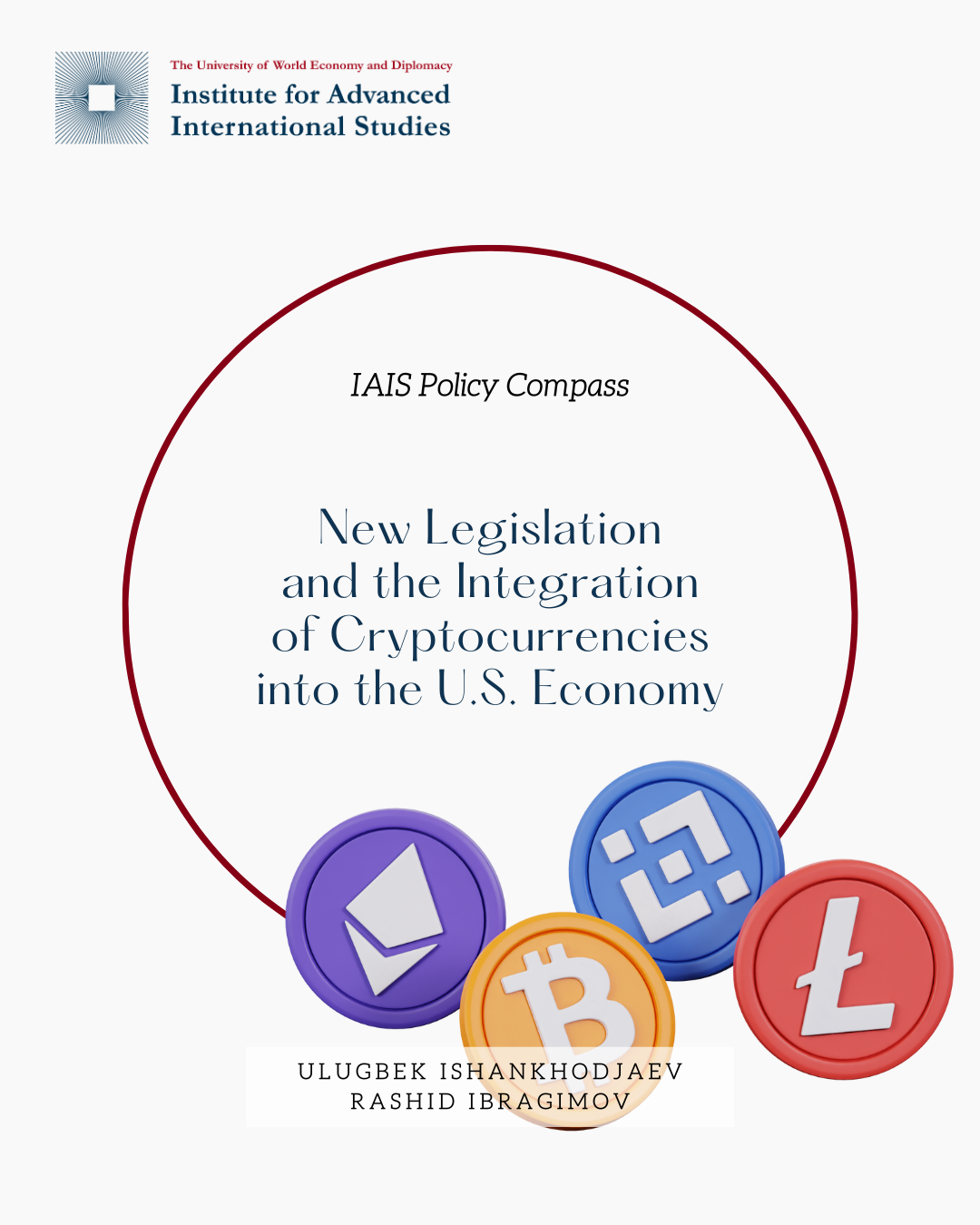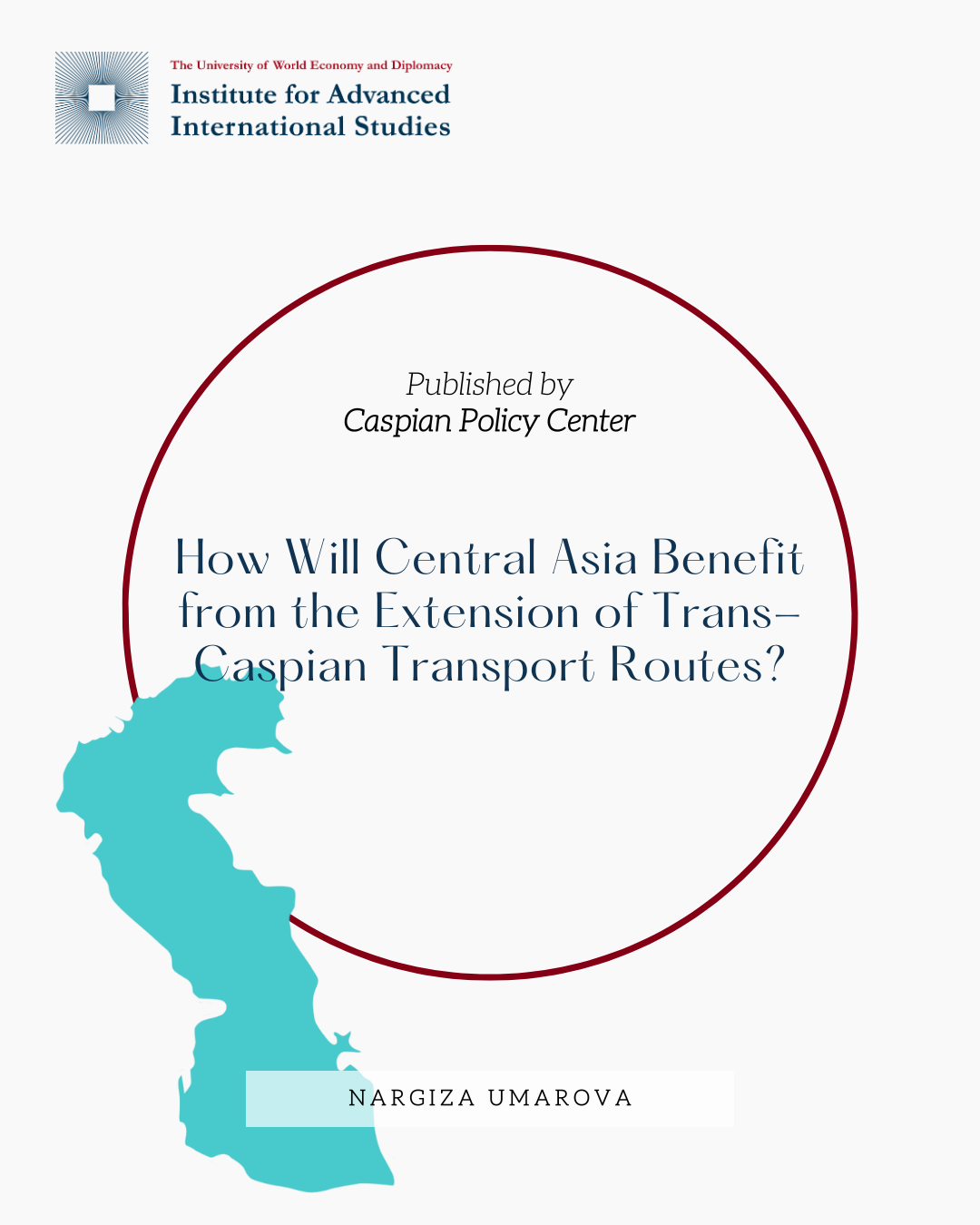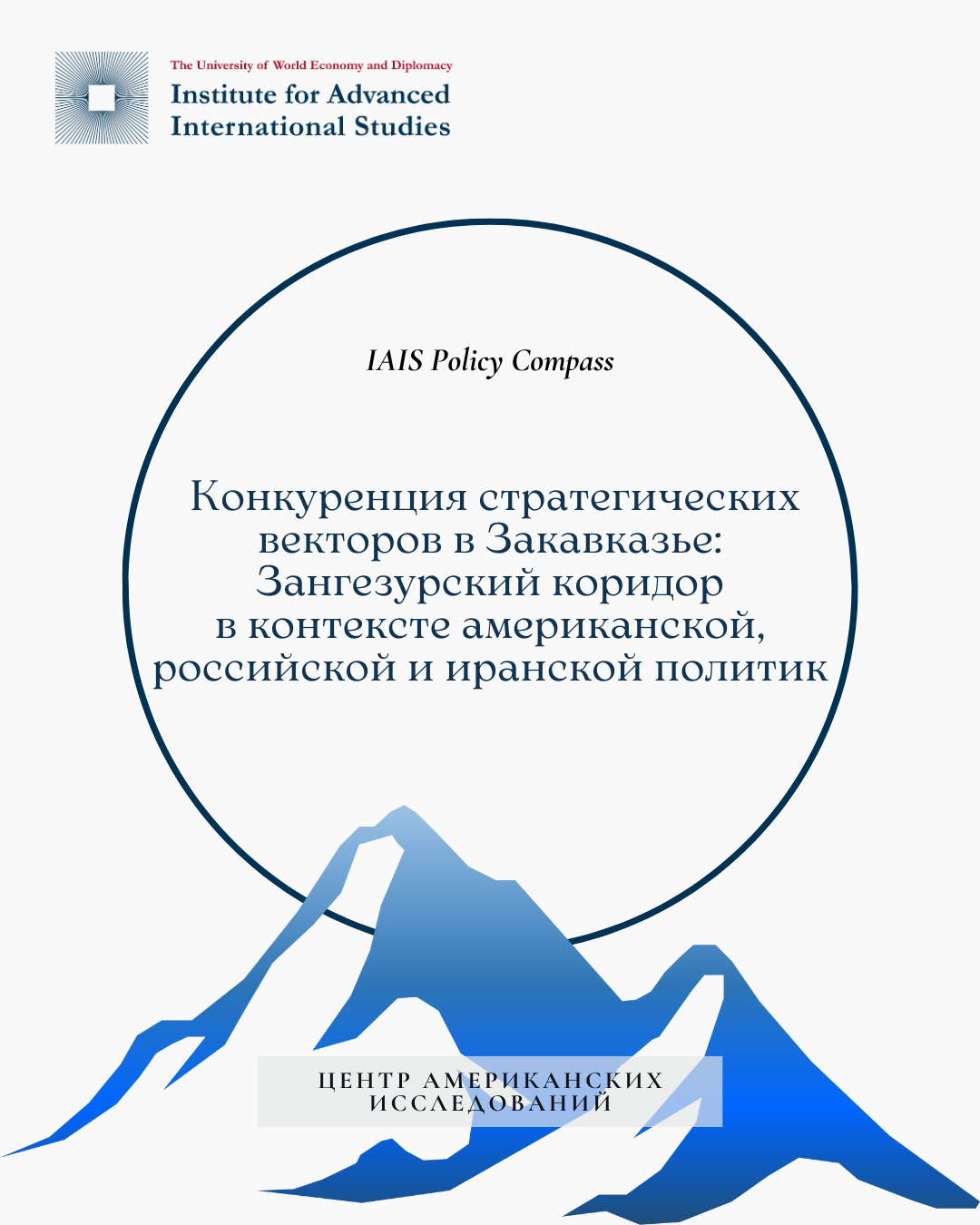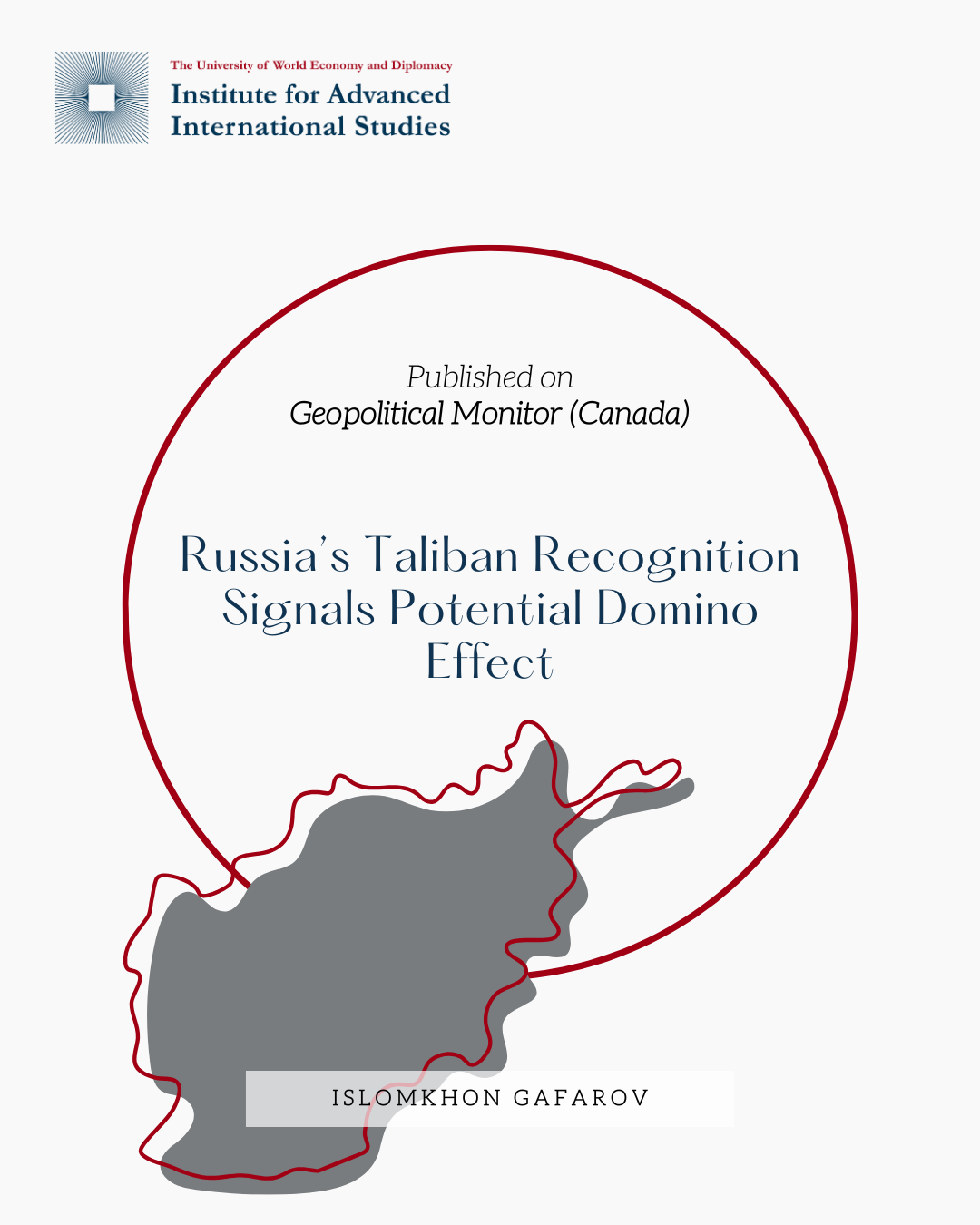By Abbos Bobokhonov & Ubaydullo Khojabekov
The 25th Shanghai Cooperation Organisation (SCO) Summit, held from 31 August to 1 September 2025 in Tianjin, marked a turning point in the organisation’s history in terms of both scale and political significance. The summit was recognised as the largest and most important event in the SCO’s 24-year history, reflecting its transformation from a regional security bloc into a platform with growing geopolitical influence. The outcomes and symbolism of the summit highlighted the SCO’s role as a key mechanism for regional integration and international cooperation. Chinese scholars noted that hosting the summits on Chinese territory is accompanied not only by financial and organisational support but also by the articulation of a strategic vision, demonstrating China’s increasing role in the global governance system and multilateral diplomacy. Moreover, the SCO summit clearly demonstrated China’s aspiration to transform the existing world order with the support of its partners and allies, including the SCO member states.
Initially established to combat terrorism and strengthen regional stability, the SCO has gradually evolved into a comprehensive multilateral platform promoting Eurasian integration in economic, technological, and humanitarian spheres. As Zhao Long, Deputy Director of the Shanghai Institute for International Studies, noted, the organisation today contributes “positive elements to the post-war world order, previously characterised by great power rivalry”, reflecting a global trend towards strengthening multilateralism. In this context, the Tianjin summit became an important forum for the Global South and middle-power states seeking alternatives to U.S.-led institutions.
Henrietta Levin from the Centre for Strategic and International Studies (CSIS) observed that China, within the SCO framework, had initiated the creation of six new platforms aimed at deepening cooperation in energy, the green economy, digital technologies, and education. Despite implementation challenges, these initiatives reflect Beijing’s ambition to institutionalise its leadership role within the organisation. The Tianjin summit confirmed the SCO’s transition towards a multifaceted structure shaping the contours of a new multipolar order. As Reuters summarised, “global governance has reached a new crossroads” — and China, through the SCO, positions itself at the centre of this transformative process.
China played a key role in shaping the summit’s agenda and outcomes. As the chairing country during 2024–2025, the People’s Republic of China organised over 100 high-level events and initiated the drafting of two key documents: the Tianjin Declaration and the SCO Development Strategy until 2035. These documents reaffirmed commitment to the principles of peaceful coexistence, non-interference in internal affairs, and opposition to unilateral sanctions and trade barriers, while calling for expanded cooperation in areas such as artificial intelligence, data governance, and sustainable development. According to an expert from the British Chatham House, this summit formed part of Beijing’s broader diplomatic campaign to position China as an architect of a multipolar world order — in stark contrast to Washington’s policy of “retreat” and isolationism.
One of the key institutional outcomes was the decision by SCO member states to establish the SCO Development Bank, which received direct financial support from China amounting to 10 billion yuan (USD 1.4 billion) in loans and 2 billion yuan (around USD 300 million) in grants. Economists described this institution as the “main practical achievement of the summit”, emphasising China’s strategy to expand yuan usage and reduce dependence on the U.S. dollar.
Zhou Mi, an expert from China’s Ministry of Commerce, noted that this approach promotes equitable cooperation and addresses real issues rather than exacerbating geopolitical confrontation. Professor Zhao Huasheng from Fudan University stressed that the SCO’s slow but steady institutionalisation represents a viable alternative to the declining activity of U.S.-led multilateral structures, especially for states suffering from sanctions and discriminatory trade measures.
Meanwhile, the organisation’s functional agenda has significantly expanded, as reflected in the Tianjin Declaration. Professor Xiao Qian from Tsinghua University compared the SCO with U.S.-led alliances such as AUKUS and QUAD, noting that the SCO’s openness, diversity, and pragmatic economic orientation make it attractive to states seeking to avoid entanglement in great power conflicts. A notable element of the summit was the active participation not only of member states but also of ASEAN countries, many of which face trade frictions with the United States. Experts highlighted that countries like Malaysia and Indonesia view the SCO as a “gateway” to Asia-Pacific markets and as a platform for enhancing their international status.
The geopolitical significance of the Tianjin SCO summit was further underscored by the participation of Indian Prime Minister Narendra Modi, for the first time since the 2020 border incident between India and China in the Galwan Valley. According to scholars, the Indian leader’s decision reflects New Delhi’s desire to maintain strategic autonomy in its foreign policy despite growing pressure from Washington. The resumption of diplomatic contacts between India and China, the restoration of direct air links, and support for the Tianjin Declaration demonstrate the SCO’s ability to function as a unique multilateral platform for dialogue among states with often conflicting interests.
Prime Minister Modi’s signing of a separate provision of the Tianjin Declaration condemning the attacks by Israel and the United States on Iran sent an important political signal. This was especially notable as earlier in June, India had refused to join a similar joint SCO statement, citing its strategic partnerships with those states. However, the U.S. administration’s tariff policies under President Donald Trump, including those targeting India, were perceived by New Delhi as unfriendly, influencing a shift in its foreign policy priorities.
In the economic sphere, the summit marked a new stage in Eurasian integration. It is expected that infrastructure projects such as the China-Pakistan Economic Corridor (CPEC) will attract up to USD 10 billion in investment by 2030. The development of digital trade, unification of customs procedures, and transition to paperless documentation contribute to more efficient cross-border logistics. The significance of key transport routes is increasing, including the China-Europe railway artery, the Trans-Caspian International Transport Route, and the International North-South Transport Corridor (INSTC).
In the technological sphere, the summit highlighted the SCO’s ambition to lead in emerging sectors. In May 2025, Tianjin hosted the Artificial Intelligence Cooperation Forum, where experts and government representatives discussed open-source software, cybersecurity, and regulatory issues. It was noted that despite disparities in technological development among member states, pilot projects in AI and digital infrastructure are already being implemented, aimed at fostering regional digital sovereignty.
The SCO’s institutional complementarity with other multilateral organisations, particularly BRICS, adds to its significance. Both frameworks bring together China, Russia, and India, forming overlapping networks aimed at rethinking Western-centric models of global governance. While BRICS focuses primarily on economic coordination, the SCO expands its agenda to include regional security, infrastructure connectivity, technology, and financial innovation.
In the geopolitical dimension, the SCO is viewed as a potential stabilising factor amid the growing trend towards a multipolar world order. Despite persisting internal contradictions — particularly between India and China, as well as India and Pakistan — the organisation demonstrates a unique capacity to integrate divergent interests within the so-called “Shanghai Spirit,” based on principles of consensus, mutual respect, and equal cooperation.
It is especially noteworthy that the SCO does not seek confrontation with Western states, particularly the United States, but actively fills the geopolitical vacuum created by Washington’s current unilateral foreign policy and economic stance and the fragmentation of the old global order model. In these circumstances, the SCO offers a more inclusive and pragmatic approach to regional security and economic interaction. Its focus on infrastructure connectivity, the resilience of logistics and trade chains, and stability in member and partner countries allows the organisation to expand its strategic presence. This makes the SCO a significant actor not only in Central Asia but also in the broader Eurasian context — encompassing the Asia-Pacific region, the Middle East, and South Asia. Thus, the organisation becomes an important element of the evolving architecture of regional and global security, offering alternative mechanisms for interaction amid the shift of the global political centre towards the East.
Nevertheless, the SCO’s further development faces a number of structural and institutional challenges. The internal heterogeneity of member states, overlapping interests at the global level, and significant disparities in technological and economic development may hinder deeper coordination and institutional integration within the organisation. However, as analysts emphasise, the SCO represents a growing alternative to the Western-centric international system and is likely to play an increasingly prominent role in shaping the emerging global governance architecture.
Thus, the SCO is gradually transforming from a predominantly regional forum into an important element of the emerging multipolar world order. The organisation provides developing economies and middle-power states not only with a platform to voice their positions but also with real tools to participate in shaping new principles and mechanisms of global governance. Amid the transformation of the international system, the SCO’s commitment to its core principles — non-alignment, non-confrontation with other structures, and a focus on peaceful development — remains the cornerstone of its legitimacy and effectiveness.
* The Institute for Advanced International Studies (IAIS) does not take institutional positions on any issues; the views represented herein are those of the author(s) and do not necessarily reflect the views of the IAIS.

